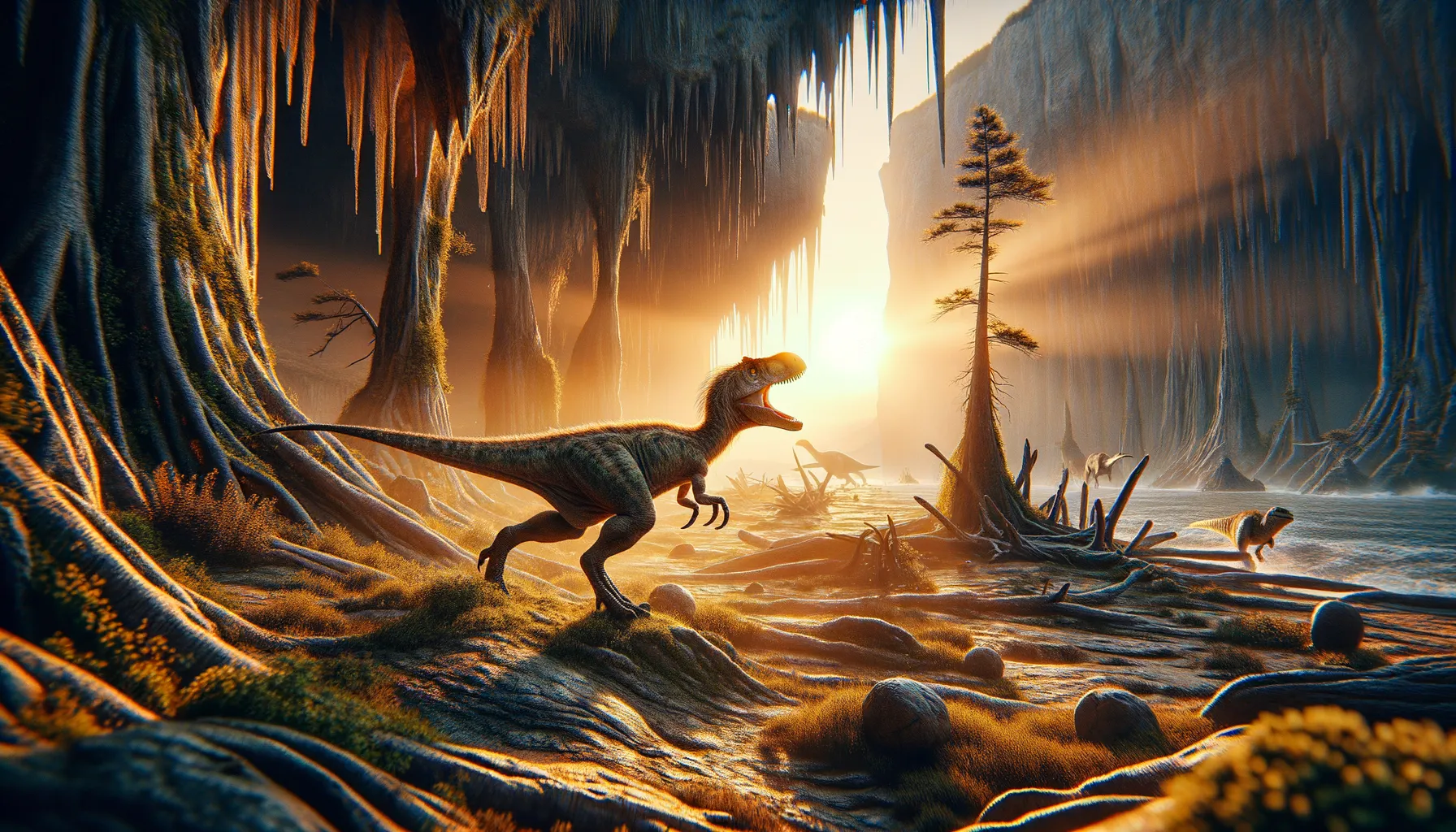
Ornithodesmus
Swift hunter of the ancient European forests.
Period
Cretaceous
Length
Around 1.8 meters in length.
Height
About 0.5 meters tall at the hips.
Weight
Approximately 10 to 15 kilograms.
Ornithodesmus was a small, agile dinosaur known for its possible swift movements and bird-like characteristics. Originally thought to be a flying reptile due to its initial classification, it's now considered a theropod dinosaur. This creature lived in the Early Cretaceous period and its fossils have provided insight into the diversity of small-bodied predatory dinosaurs in Europe, with particular finds on the Isle of Wight fueling its historical intrigue.
Diet
As a small theropod, it likely fed on small vertebrates, potentially including small reptiles and mammals. It may have also scavenged for insects or carrion available in its environment.
Hunting
Ornithodesmus was likely an opportunistic predator, using its agility to catch unsuspecting prey. Its hunting strategy probably involved stalking through forested areas where it could use cover to its advantage.
Environmental challenges
Living during the Cretaceous period, it faced significant environmental challenges such as fluctuating climates and varying food availability. Competition with other predators and larger dinosaurs could have been a critical factor affecting its survival. Natural disasters, like volcanic activity or changes in sea levels, might have further challenged its day-to-day existence.
Speed
Likely swift for its size, adapted for quick movement.
Lifespan
Estimated at several decades, typical of small predators.
First discovery
First discovered in 1887 on the Isle of Wight, England.
Fun Facts
- Ornithodesmus was first thought to be a theropod dinosaur, but later research revealed it was actually a pterosaur, a flying reptile.
- The name Ornithodesmus means 'bird link', which reflects the early belief that it was closely related to birds.
- Fossils of Ornithodesmus were discovered on the Isle of Wight in England, a location famous for dinosaur finds.
- This pterosaur lived during the Early Cretaceous period, around 130 million years ago.
- Ornithodesmus had a wingspan estimated to be about 1.8 meters, or roughly 6 feet, allowing it to soar through the skies.
- Due to its confusing classification history, Ornithodesmus is an example of how paleontology is constantly evolving with new discoveries and insights.
- Although not much is known about its diet, Ornithodesmus likely hunted small animals and fish, using its flight to swoop down on prey.
Growth and Development
Ornithodesmus, like many theropods, would have hatched from eggs and undergone rapid growth in its early years to reduce vulnerability. Juveniles might have shown different features than adults, helping researchers understand dinosaur development. Developmentally, a balance of energy between growth and managing environmental pressures would have been essential for survival.
Habitat
It inhabited varied landscapes, including coastal environments and forested areas that offered ample resources. Its adaptability might have allowed it to thrive in areas rich with prey and sufficient cover. The semi-aquatic surroundings due to nearby coastlines might have influenced its food sources and potential threats.
Interaction with other species
Ornithodesmus probably interacted with various other dinosaur species and had to navigate a food web that involved both cooperation and competition. Interactions may have included competing for food resources and avoiding larger predators. Fossil evidence suggests a diverse ecosystem where different species coexisted and adapted to each other's presence.
Natural lifespan
In the wild, a natural lifespan would typically reach a few decades.
Reproduction
Similar to other theropods, Ornithodesmus would lay eggs in structured nests, possibly caring for them until hatching. Maternal instincts could have included protecting the young until they were less vulnerable to predators. A communal nesting area might have been shared with other Ornithodesmus or related species for increased security.
Social behaviour
Social behaviour might have included forming small hunting groups or living in loose associations. Communication could involve vocalizations or body language to organize social structures or hunting initiatives. Territorial disputes might occur between individuals or groups during resource scarcity.
Fossil locations
Fossil remains have been discovered on the Isle of Wight, an area known for a rich variety of dinosaur fossils. Initial findings led to its reclassification, illuminating the complexity of paleontological discoveries. Further fossils might be strewn across other parts of Europe, though the Isle of Wight remains the primary location for research on this species.
